As urbanization accelerates, labor shortages persist, and sustainability becomes non-negotiable, the global construction industry is undergoing a much-needed transformation. One of the most disruptive trends leading the charge is modular construction, a method that’s quickly gaining traction across residential, commercial, and public infrastructure projects, especially in Europe and in the USA.
But what exactly is modular construction, and why is the world shifting toward it?
What Is Modular Construction?
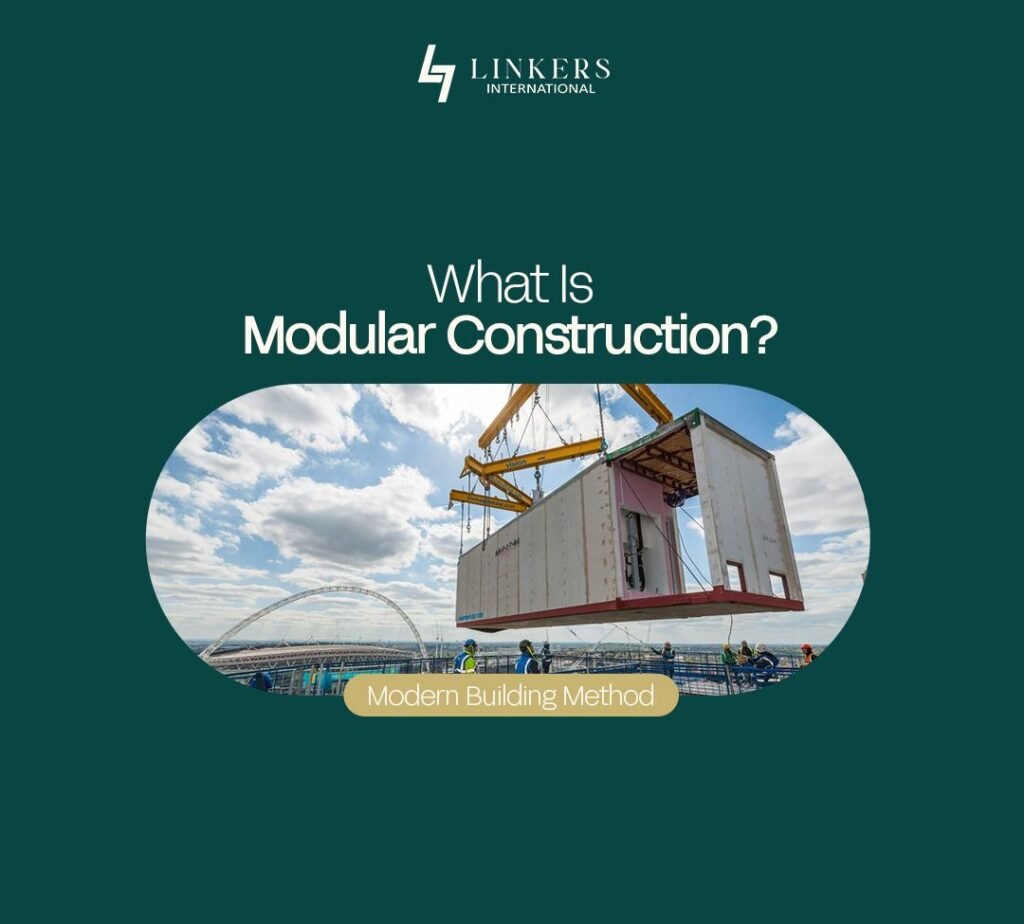
Modular construction is a modern building method where structures are built in parts (called modules) in a controlled factory setting, then transported and assembled on-site.
Think of it as assembling Lego blocks, only these blocks are fully fitted rooms or building components, built with precision, and designed to fit perfectly together. Here are the types of Modular Construction and the technologies powering it;
- Volumetric Modules: Fully built rooms or sections assembled off-site and transported as complete units.
- Panelized Systems: Pre-fabricated wall, floor, or roof panels assembled on-site.
- Hybrid Modular: A mix of modular and traditional construction methods to balance flexibility and efficiency.
- Kit-of-Parts: Pre-cut components shipped and assembled on-site, ideal for remote or complex terrains.
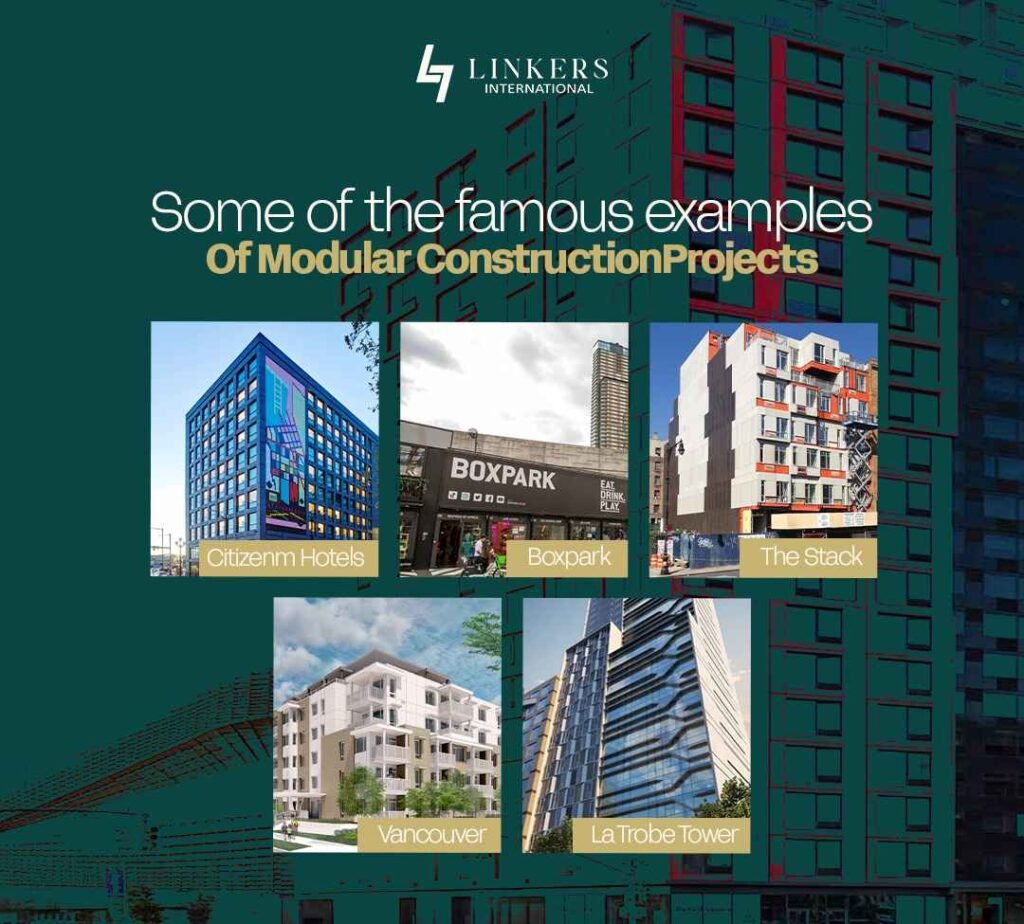
How Technology Is Fueling the Modular Movement?
Technology is playing a critical role in accelerating the growth and adoption of modular construction. From planning and design to production and logistics, digital tools and automation are transforming how buildings are conceptualized, built, and delivered.
These advancements not only enhance precision and efficiency but also help overcome some of the limitations traditionally associated with off-site construction.
- Building Information Modeling (BIM) improves accuracy and planning.
- Robotics and automation are streamlining factory workflows.
- AI-driven scheduling and logistics optimize timelines and resources.
- 3D Modeling & CAD enables precise design and customization of modules before production.
- CNC Machines ensure precision cutting and shaping of materials with minimal waste.
- 3D Printing is an emerging technology used to print structural components or entire modules using special concrete blends.
Why Is Modular Construction Gaining Global Momentum?
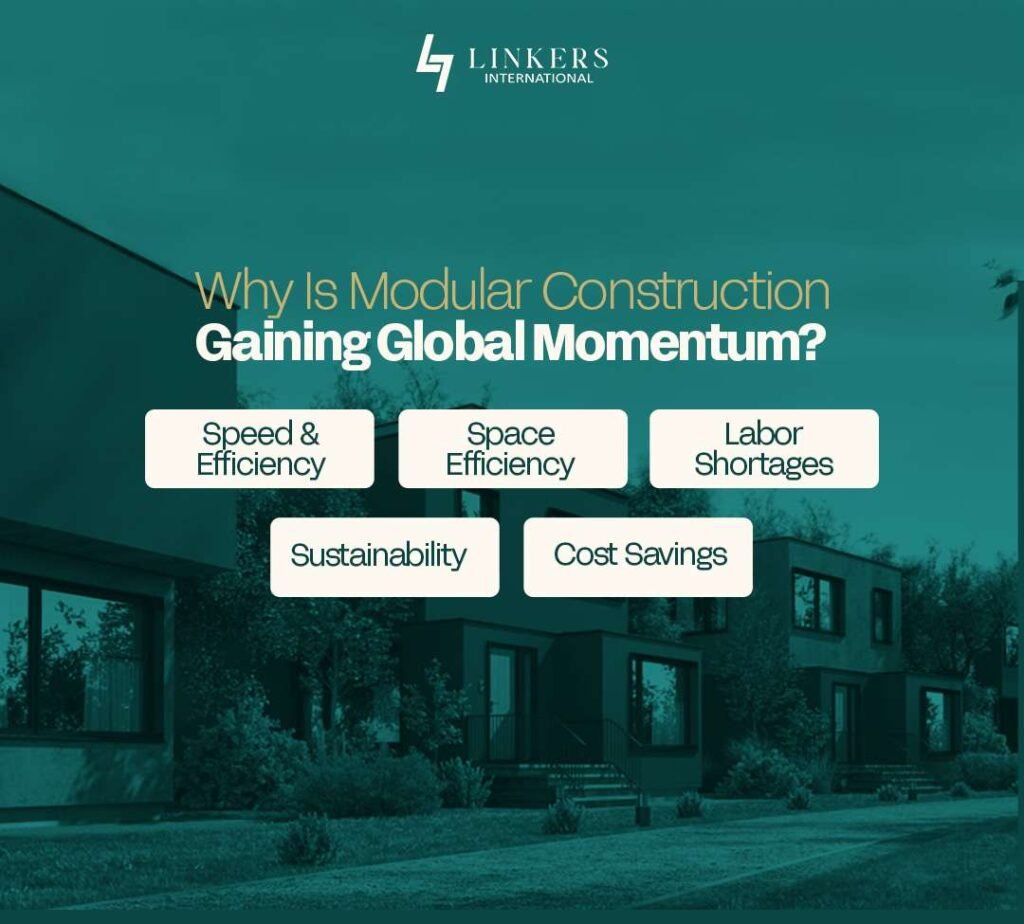
Several key forces are pushing modular construction into the mainstream. Beyond the immediate benefits, modular is well-positioned to shape the future of real estate development:
1. Speed & Efficiency: Modular projects can be completed up to 50% faster than traditional builds. Therefore, factory-based manufacturing eliminates common delays due to weather or on-site labor shortages.
2. Cost Savings: Modular construction produces Less material waste and better inventory control. This results in lower labor costs and more predictable budgeting throughout the project lifecycle.
3. Labor Shortages: Modular requires fewer workers due to automation and factory-controlled environments, which is a major advantage in markets facing construction workforce gaps.
4. Urbanization & Space Efficiency: With cities under pressure to house growing populations quickly, modular enables faster deployment of apartments, commercial units, and social infrastructure.
5. Sustainability: Modular construction reduces waste and carbon emissions. Therefore, it allows the use of energy-efficient materials and sustainable building practices.
What Are The Limitations of Modular Construction?
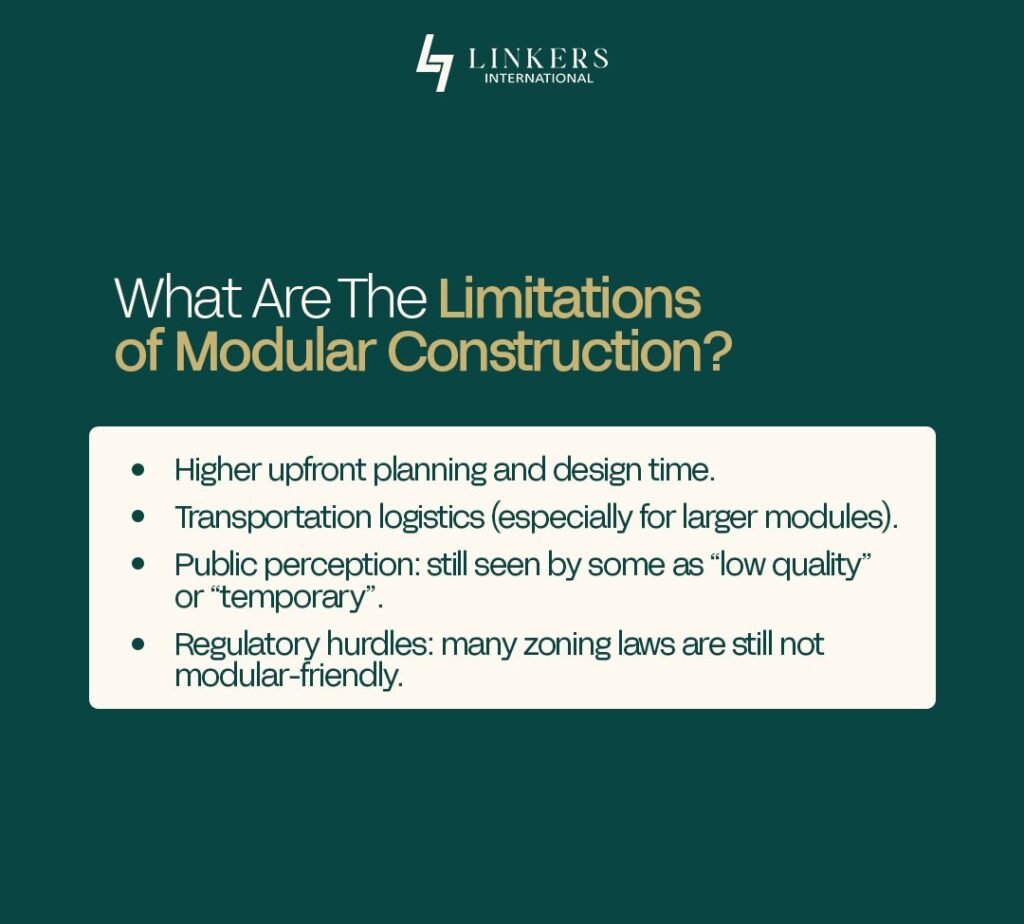
While modular construction offers speed, efficiency, and sustainability, it comes with its own set of challenges. Several practical, regulatory, and perception-based hurdles still limit its widespread adoption in many markets. One of the biggest hurdles is the need for detailed upfront planning and design, as factory production leaves little room for on-site changes.
- Higher upfront planning and design time
- Transportation logistics (especially for larger modules)
- Public perception: still seen by some as “low quality” or “temporary”
- Regulatory hurdles: many zoning laws are still not modular-friendly
Scope of Modular Construction in Pakistan
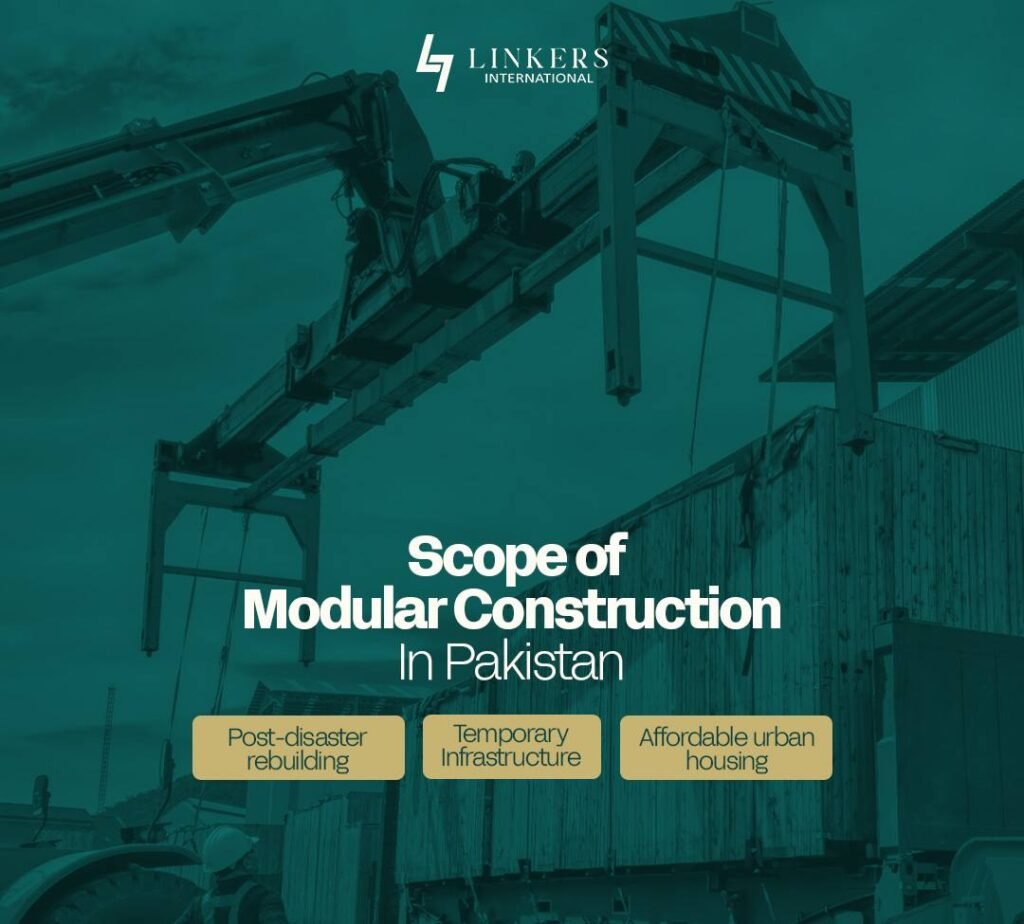
Modular construction, with its ability to deliver pre-fabricated units quickly and efficiently, is ideal for post-disaster rebuilding, especially in remote or hard-to-access areas. In Pakistan, modular construction presents a timely and highly practical solution to some of the country’s most urgent challenges.
- Post-disaster rebuilding
- Affordable urban housing
- Temporary infrastructure
The recent devastating floods in regions like Gilgit-Baltistan and Khyber Pakhtunkhwa have once again highlighted the need for rapid, resilient, and scalable housing and infrastructure solutions.
Beyond emergency response, it holds significant promise for affordable urban housing in densely populated cities and for temporary infrastructure like schools, healthcare units, and relief shelters.
The Practical Challenges of Modular Building in Pakistan
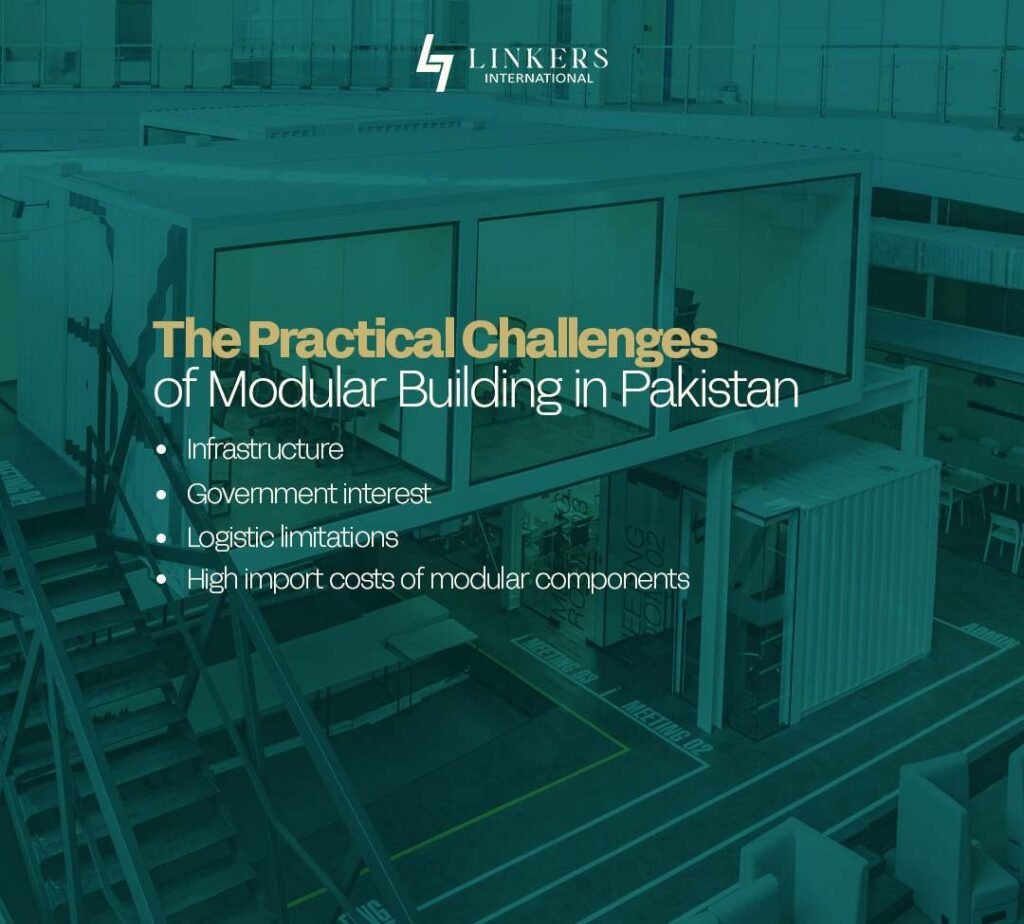
While the potential of modular construction in Pakistan is significant, practical implementation remains a major challenge. The country’s construction ecosystem is still largely traditional, with limited investment in industrialized building methods.
- Infrastructure: Lack of specialized factories, trained labor, and supply chains to support large-scale modular manufacturing.
- Government interest: Outdated building codes, unclear regulations, and bureaucratic approval processes hinder innovation.
- Logistic limitations: Transporting modular units to remote or disaster-hit areas also becomes complex due to poor infrastructure and logistical limitations.
- High import costs of modular components make the process financially unviable if materials or modules are sourced from abroad
Until these systemic barriers are addressed, modular construction will likely remain niche rather than mainstream in Pakistan.
Vertical Development: A More Viable Alternative for Urban Pakistan
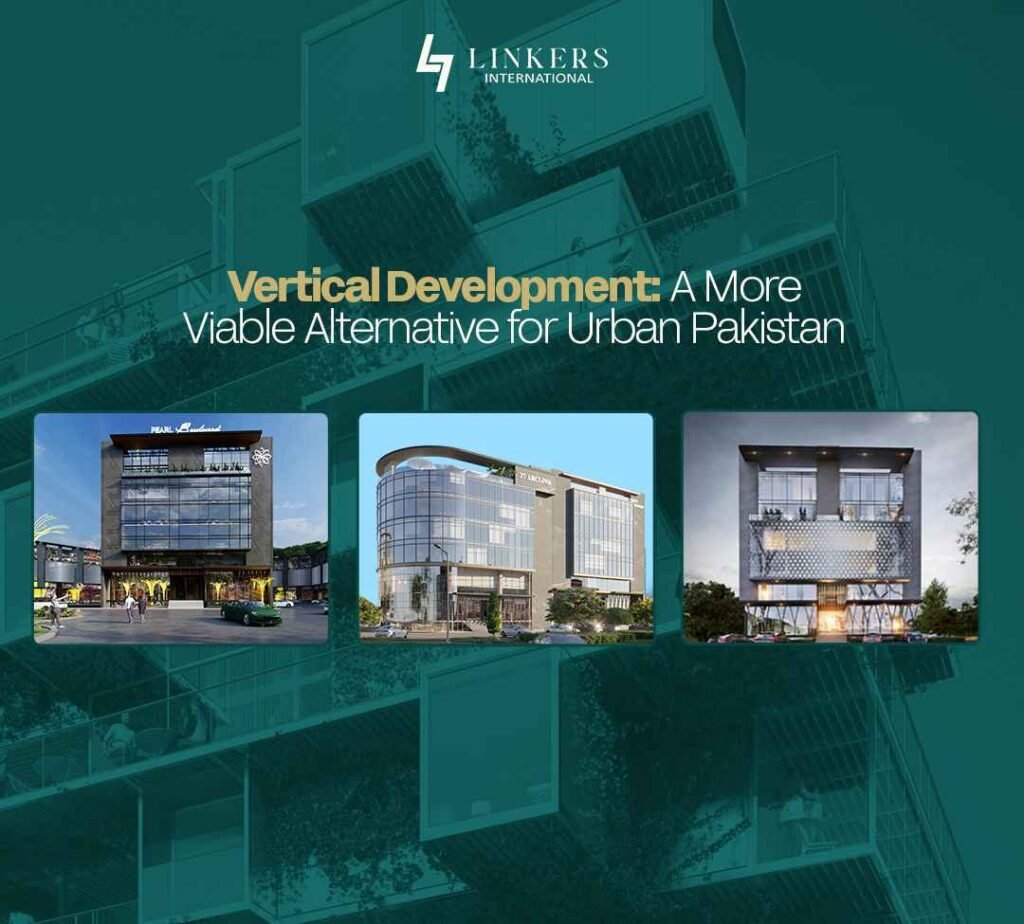
As Pakistan faces rapid urbanization and increasing land scarcity, vertical development has emerged as a practical and scalable solution to meet growing housing and infrastructure demands. Building upward, through mid- to high-rise residential and mixed-use projects, not only optimizes limited urban land but also aligns with the country’s existing construction capabilities and regulatory frameworks.
At Linkers, we recognize the urgent need for smart urban growth. That’s why we are actively developing vertical projects such as Pearl Business Center, 27 Arclink & Pearl Boulevard that combine modern architecture, community-focused planning, and long-term livability. Our focus on high-rise development is driven by the belief that sustainable urban expansion must be both space-efficient and future-ready.
With strategic planning, strong execution, and responsible development, vertical construction stands out as the most viable path forward for Pakistan’s urban centers, at least in the short to medium term, until modular technologies become more feasible at scale.





